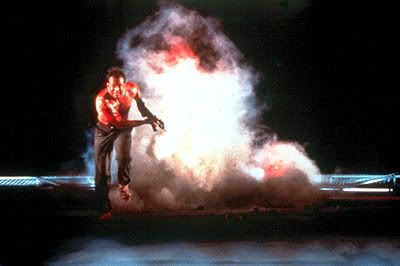



The first still from Pulp Fiction, the second is from Planet Terror, the third from Die Hard and the fourth and final one from Old Boy.
Pulp Fiction is a hybrid genre with some indie blended with some gangster in the still. The lighting in Pulp fiction isn't what you would expect in a thriller film however they are wearing the props you'd acpect and the action code is still there.
Planer Terror was produced by Tarintino who created Pulp Fiction but is directed by Rodrigez.
The gun is the action code but the fact that its her leg shows that the film could have a humourous side. Despite the gun the lighting is still low key but with a high contrast. This is to show that while the movie is a thriller horror movie there is a less serious side behind it.
The fourth still, Die Hard, is a long shot. The reason why the director went for a long shot was to signify that huge explosion behin Willis. This connotes that the protaginist is very powerful; almost as a one man army. The blood is highly contrasted to the background to signify that he's been in battle.
The fourth and final still is from Old Boy. It's a close-up of the protaginist cutting is tounge. The fact that it's a close-up shows the film's ultra-violent side. The lighting is high key which connotes that he could be inside. The fact that he's using a cloth shows his human side and that he could be good or even a normal person to surpress the blood (so he can survive).

